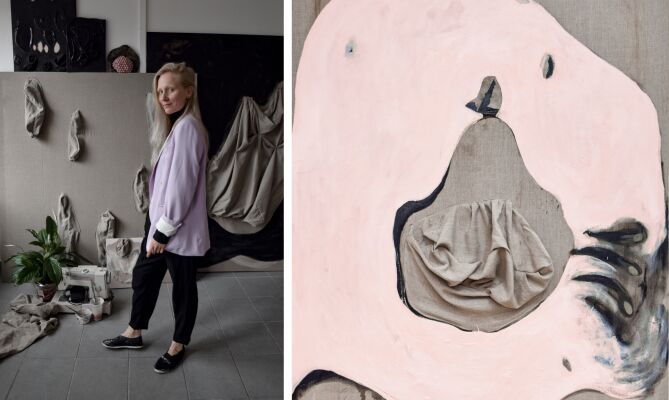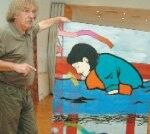“The working process is a very intensive monologue to myself.” – Interview with Jósefina Alanko
The 28th STRABAG Artaward International is one of the region’s most highly endowed private art prizes. In 2023, Jósefina Alanko, a Polish-Finnish artist, received the main prize – and to our great pleasure we had the chance to talk to her about her artistic practice, the story behind the submitted artworks and how her artistic language changed over time.
What works did you submit to Strabag's award, and according to what criteria did you select them?
I submitted a collection of three paintings to the award. These works were researching my cultural heritage from Karelia, Finland, and more specifically my great-grandmothers, who were poets and singers in the Karelian community. Their role was to heal people's pain and health by praying, crying for them, and connecting to death by talking to it. These Karelian poet singing sessions (or another name dirge singing, and soothsaying sessions) are central to these three works. Weaving the knowledge of my grandmothers into this day, reflecting my position as an artist and as a continuum of my cultural traditions. For me, it was important that the works are presenting truly me.
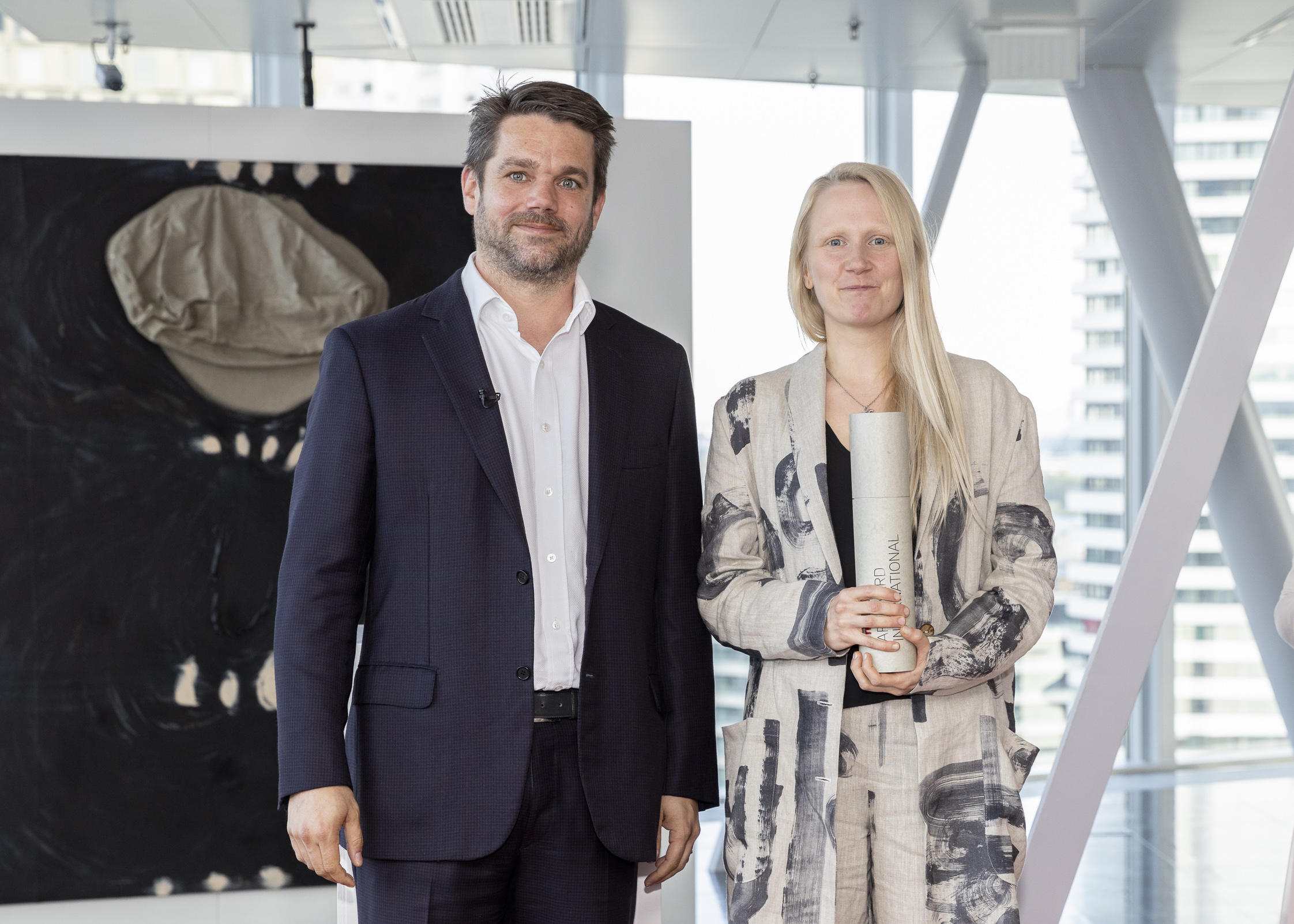
When did you become interested in organic forms, bringing life to the canvas material, and what created this interest?
It's always been in me, but it took time and thousands and thousands of painting hours for it to emerge clearly in my work. My interest to play with the limits of painting and sculpture led me to abstraction. When I set myself free from images, I could really dive deeper to materials and to my own unspoken world. This playfulness – with the rules of what painting is expected to be – reflects my vision of being a persona in this world. There are a lot of ’’boxes’’ and expectations (especially for women and minorities) about how to exist in this world and how to act and behave. For me, that’s something so boring and makes me disappointed by the world. I want to grow free like nature. In the end, I believe, especially as an artist it is the only way to become You. And becoming You is the most radical thing You can do.
The varying textures create a landscape of material that inspires the viewers to make associations. Your artworks reference and explore femininity and motherhood (spiritually as well as physically), a connection with nature, and the concept of matriarchy – but what is your biggest inspiration when you work? Could you please tell me more about your artistic method and practice?
My working process consists of many stages, which leads us a bit closer to the meanings and interventions. Everything starts with textiles. I often saw a few meters or just a few centimetres of fabric on the surface. After this, I stretch the canvas to the frame and I start painting the final picture. The sewing part is very intuitive. I let the fabric lead the shape while attaching it. The painting progress follows more rules because I leave a lot of canvas unpainted. I base the painting process on my drawings and notes, which I collect systematically, every day and everywhere I go. These drawings and notes are like nutrition for the works to help them become clear. Drawing is also necessary to understand my own visual language.
The working process is a very intensive monologue to myself. My works seem to be very suggestive to the viewer. When the painting is suggestive, it opens up and changes the monologue to a dialogue, between the viewer, and the work. Also, suggestive force in my works is something interesting. Femininity and nature have always been important values for me. Growing up close to the big nature of Finland, I dare to say that nature is the biggest feminine energy on this planet. When I look at this world where we live right now, feminine and masculine energy is unbalanced. We don’t hear the feminine wisdom enough. That’s why I feel it is very important to focus on underlining femininity in my works. We must raise the feminine energy to be able to survive in this world, to be able to care and understand the life we have got.
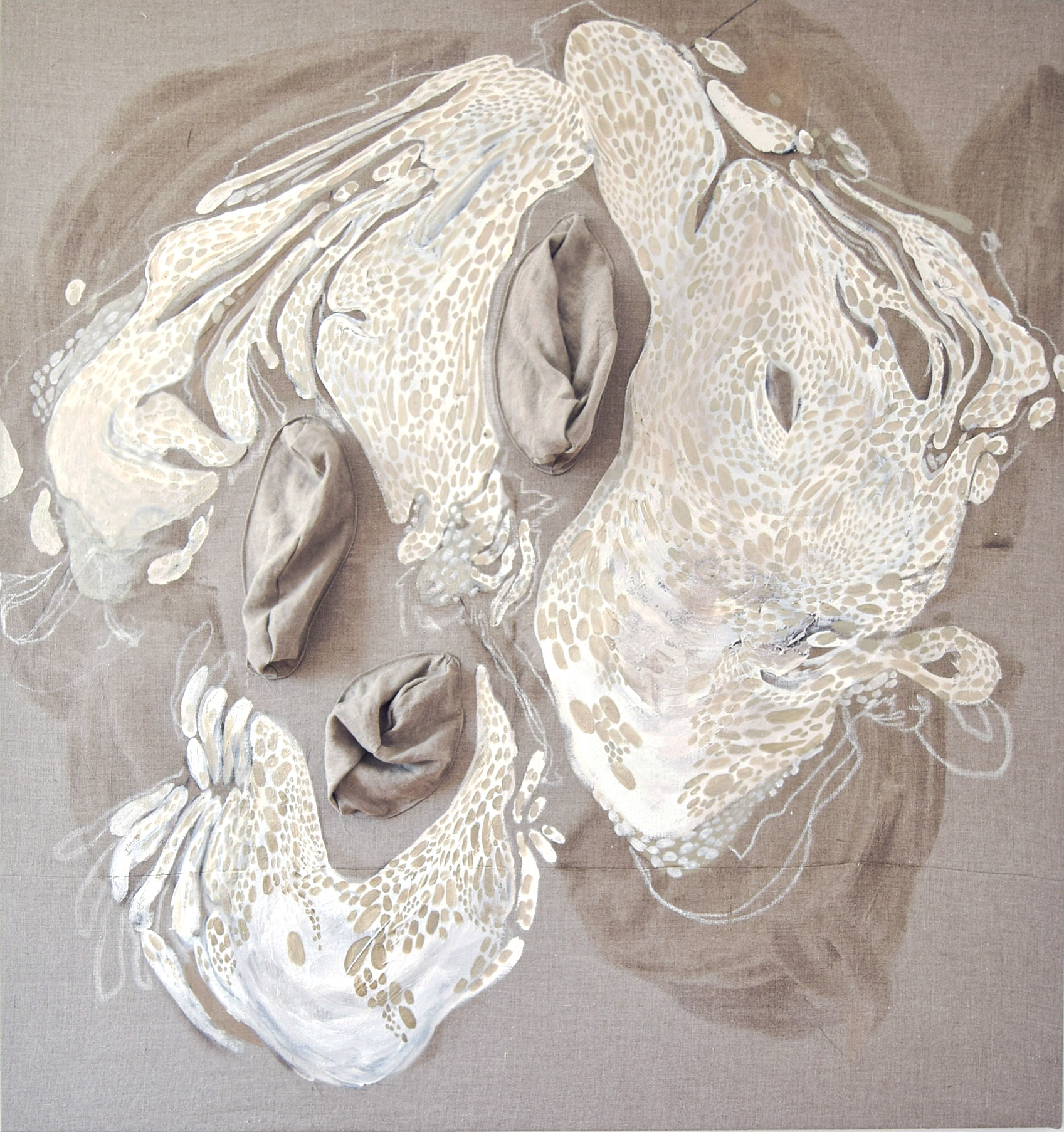
How much has your technical palette changed during the recent years?
I did a very intensive research on painting techniques and materials in the last few years. For me knowing the forms I work with deeply is one of the most vital things to be the artist I am. My earlier works have rich, even heavy textures. I used materials like silicone, sand, resin, and materials from nature. I was trying to find the soul of the materials and I think many times I found it and I like to add peeks of this to my works. For example, I use glue bubbles in my paintings. Nowadays my paintings have changed their form. I am interested in limiting the things I add to the paintings to make my visual language stronger. This way I underline more and more the details and I use raw canvas, sewing, paper, drawing, and painting marks. Also, I limit my color use. For me color is like a sound and I can not stand too much of it. This is also related to my experience of synesthesia. For me color is sound and sound is shape. That is why I never listen to music when I paint. This is a thing I needed to learn in the recent 6-8 years. Silence has its own voice. I want to learn to express that silence better.
What was the experience like being in Vienna, how different was it from your experiences related to previous exhibitions and art awards?
I moved to Vienna at the same time with the award by chance. So when I got the apartment I didn’t actually know yet what the future will bring to me. I really love the city because of its vibe, architecture and of course art – that was my reason behind my move here. Winning the Strabag Artprize gave me a lovely chance to meet a lot of new people which has made my time in Vienna so far absolutely beautiful. Settling and finding my place still takes time, but this is also the reason why the award has such a big and special place in my heart – it became literally a symbol of a new era in my life.
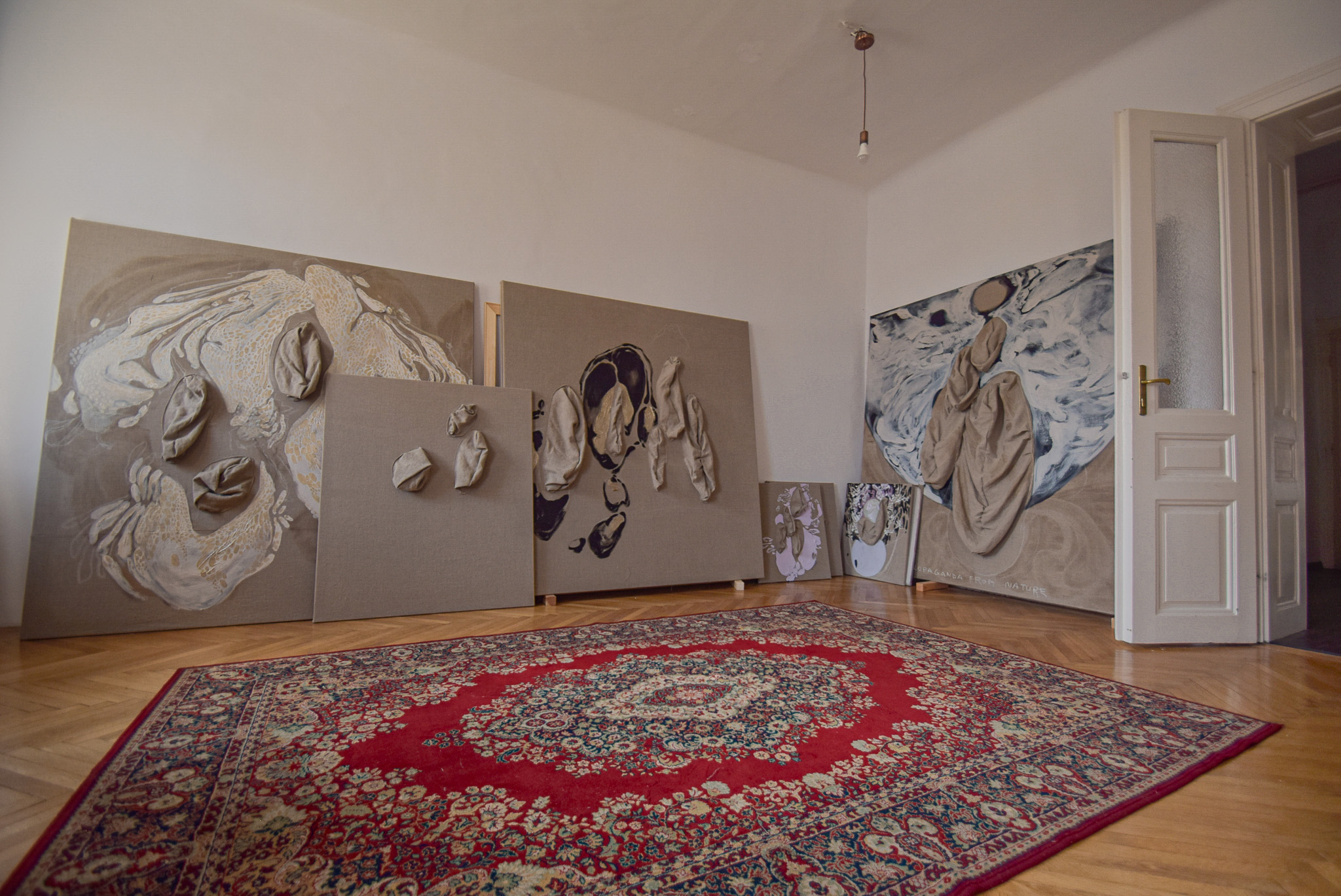
What is the next exhibition where we can see your work?
I am at the moment working on my solo show for STRABAG Kunstforum in Vienna. The opening will be 11.1.2024. Warmly welcome to the opening!
